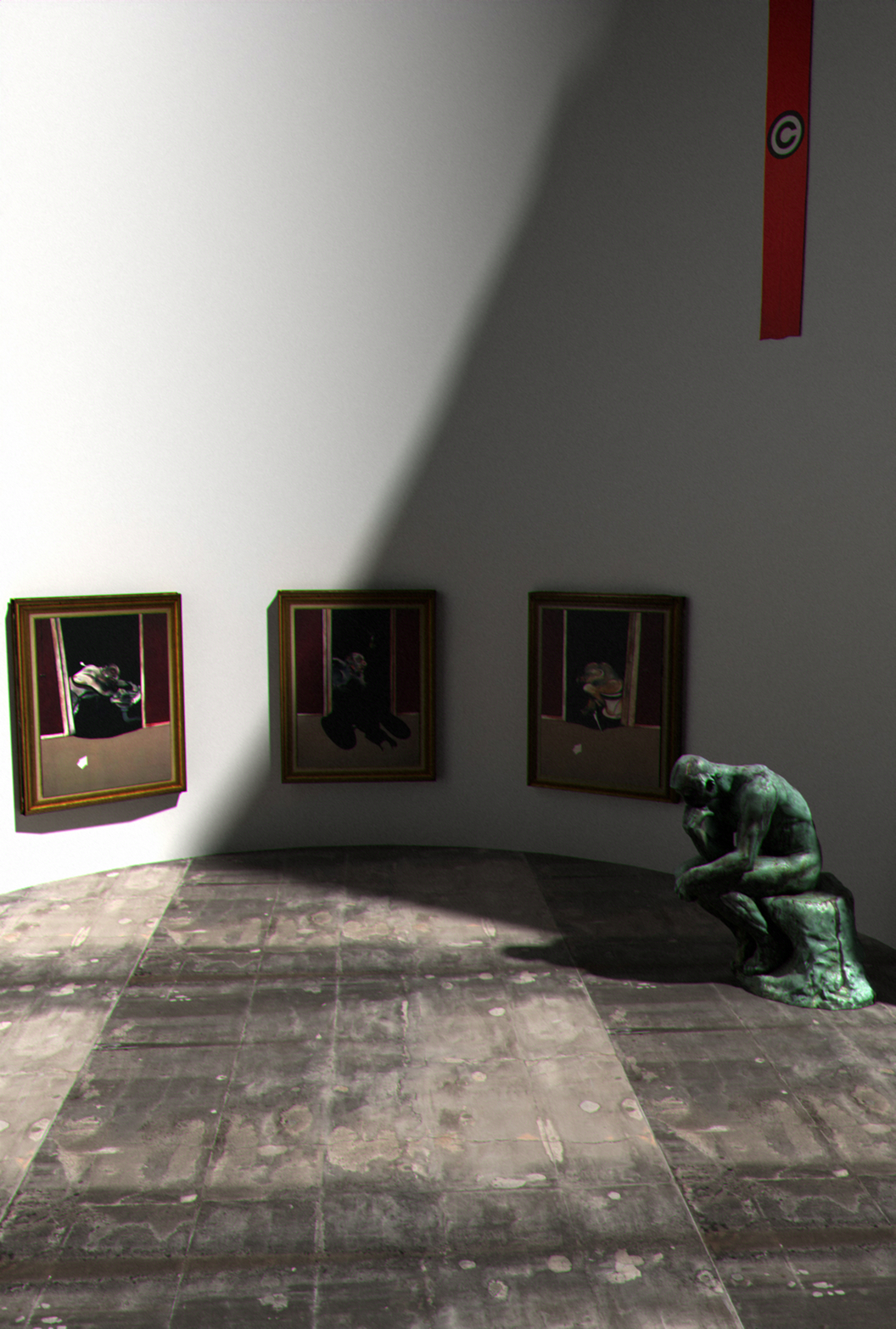Data_Colonialist (©) simulates environments through 3D rendering and spatial manipulation. Artworks aren’t bound by physical limits—they are recontextualized, repositioned in relation to one another, generating new relationships, meanings, and tensions between them. Departing from static illumination, the environment simulates the physics of sunlight, while even the earth beneath the painting can shift—destabilizing the conventions of art historical display.
This act of digital manipulation directly parallels the effortless way digital artifacts are reproduced, downloaded, copied, and circulated—fluid, frictionless, and detached from origin—exposing the insidious nature of a new form of colonization: the slow encroachment of algorithmic taste.
Curation, in this context, becomes a way of drawing attention to the systems we rarely notice—but always inhabit. Systems that feed on mimetic desire, quietly teaching us what to want by showing us what others already do.
Flagged Content
THE FLAG (©) is not a work of art in the traditional sense. It is a curatorial object—an aesthetic proposition that reveals how symbols accrue power, mutate through history, and recode systems of belief.
Drawing direct visual influence from the long red flags of 20th-century totalitarian regimes, the work consciously evokes a familiar unease. Its aim is not shock value. Rather, it foregrounds the evolving mechanics of persuasion. The discomfort it generates is intentional.
Throughout history, flag design—vexillography—has functioned not solely as an artistic practice. From revolutions to empires, democracies to dictatorships, flags have always carried messages larger than themselves. Only a flag can carry the power to mobilize identity at scale.
In the 20th century, power was overt, symbolic, and centralized. It raised flags, built monuments, and filled stadiums. It relied on collective emotion—fear, pride, belonging—and operated on the logic of mass: mass media, mass identity, mass mobilization. Control meant assembling bodies in public, reinforcing a singular narrative through spectacle and allegiance.
In the 21st century, power is ambient, algorithmic, and invisible. It no longer declares itself. It embeds. It curates what is seen, what is shared, and what is believed. Control is exercised through information systems, engagement loops, and perception management. Identity is no longer declared—it is inferred. Behavior replaces belief. We no longer gather beneath one banner; we scroll through many.
Where propaganda once enforced a unified truth, it now multiplies realities—splintering consensus, and producing a kind of algorithmic schism. Truth is not silenced. It is buried in a flood of competing signals. We no longer burn books—we drown them in content. Dissent doesn’t need silencing. It only needs to be buried.
This is a flag for an age in which propaganda no longer declares itself.
We already live under this flag.
We just haven’t seen it yet.

